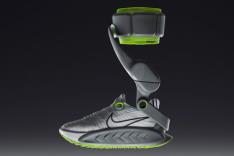Once it's calibrated, the course is traveled and measured at least twice on the bike. The first time is to establish the start and finish lines. The second is to check the distance between those lines.
Then, the bike needs to be recalibrated, four more times, to determine the constant for the day.
A race course is defined by the shortest possible route. So the bike takes this route cutting corners and turns as close as possible. Also, if it's a winding road, measurers don't follow the side of the road. They go as straight as they can.
One more thing: it's better that a course be a foot too long than a foot too short. So, acknowledging that following the shortest possible route is difficult, a short course prevention factor of 0.1 percent is built in. So a 10K course (6.21371 miles) is measured to be 6.21992 miles to ensure that the course isn't too short. In this example, that's an additional 10 yards built in.
More: 10 Tips for Your First 10K
In Santa Barbara, Snow hired two experienced measurers out of Los Angeles to lead the efforts when their course was re-drawn in the second year. In all, four people (Snow included) had a hand in the measuring, and the whole process took an entire day. Another day was needed to organize all the paperwork that came from the measurement and send it to USATF for certification.
Once certified, a race doesn't need to be re-certified for 10 years, or until the course is changed. However, if an open record is set on the course, USATF will re-measure the course to ensure its accuracy.
More: How to Choose the Right Race Strategy
Why GPS Differs
Instead of the straight line USATF stresses, the satellites in the sky above you track your route through a series of plotted dots that's typically within 10 feet of your GPS watch. But that 10-foot margin of error can add up over the course of 26.2 miles. Two dots could weave 10 feet inside and outside of that "straightest path possible" that the USATF certification ensured, which will add to the total distance on your watch.
Other factors can mess with your GPS, too, including:
- The number of participants at big races often make going the "shortest path possible" impossible for most runners. Things like taking wide turns can add distance to your total.
- Tree cover could disrupt the GPS readings and make it slightly less accurate.
- Veering off for a water stop, bathroom break or to run over and high-five your kid will add distance to your total.
- Starting the GPS in the corral rather than at the start line adds pre-start line distance to your total.
More: 6 Running Apps to Pick Up the Pace
The Bottom Line
Snow, who doubles as a running coach, praises the usefulness of GPS watches in training. Few runners would disagree.
But when comparing the accuracy of GPS watches versus the USATF course certification process, the GPS doesn't stand a chance.
"If the race is certified, it is certified," Snow says. "You can go to the USATF website and check. Now, that doesn't mean the races itself don't occasionally make mistakes and put the mile markers in the wrong place or something like that. That could be a problem.
"But (runners) can rest assured that the race itself is right on the money."
More: 9 Race-Day Tips for First-Timers
 Ready to run? Search for a race.
Ready to run? Search for a race.- 2
- of
- 2
About the Author

Get ACTIVE on the Go


Couch to 5K®
The best way to get new runners off the couch and across the finish line of their first 5K.
Available for iOS | Android







Discuss This Article